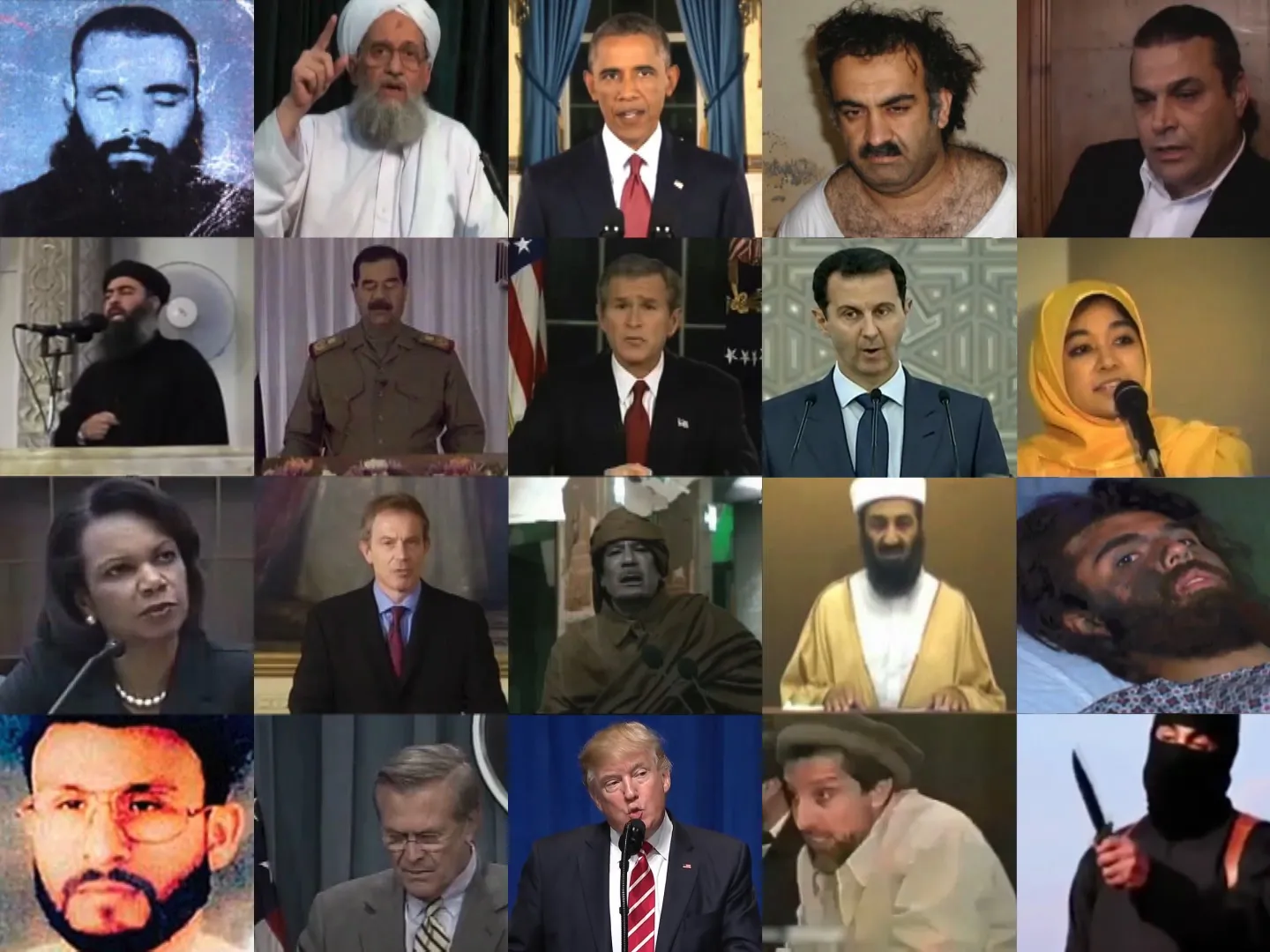Erin Barnett: From Guantanamo Bay to Afghanistan to extraordinary rendition and the CIA’s secret prison program, you’ve been exploring processes and experiences of conflict in your work for more than ten years. What is the role of the visual artist in times of war?
Edmund Clark: I think the role of an artist in times of war is to question and to find strategies for exploring and recording what is going on behind the official messages and processes. I think it is to look at the experiences of individuals caught up in these events and to reflect the complexity of the situation. Increasingly, it is finding ways to make work that reflects new legal justifications and technological processes of contemporary conflict. How to make work about conflicts that don’t appear on our screens that are operated by autonomous machines following algorithmic patterns.
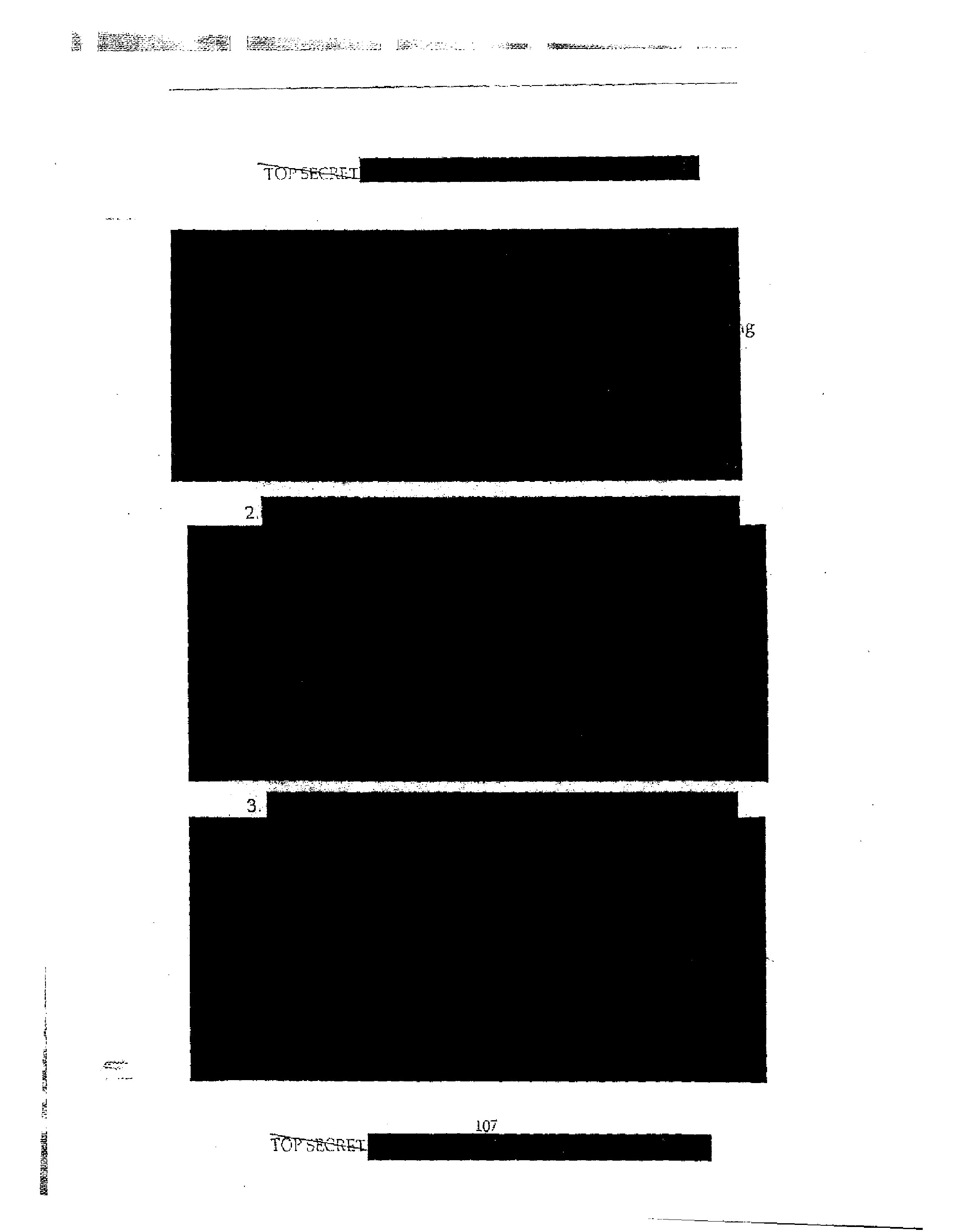
EB: Much of our understanding of our global War on Terror is based on images and sound bites transmitted by the mass media. How do your representations of the War on Terror differ?
EC: Most of the representations we see on our screens about the War on Terror are distancing. Terror breeds fear, and distancing ourselves from fear and threat is a natural instinct. Terror succeeds by breeding fear that is out of proportion to the actual violence that it manifests. It is a threat from without and within. The potential external threat may strike at the heart of our families, homes, and daily lives. Even worse, the threat may come from within our communities. Your neighbor may potentially be the threat. This form of fear starts to moderate our usual modes of behavior and belief.
Terror makes us more likely to accept what we are told about a threat we cannot meaningfully quantify. This is how one of the justifications for torture takes hold: it’s okay to torture someone because you believe they may have information about an imminent threat. You don’t know they do, but you suspect it, so it’s alright to break the law and torture them for information because it may save lives; and you think they are probably guilty anyway. As Michel Foucault points out in Discipline and Punish: The Birth of the Prison, the regulated pain of torture is about both investigation and punishment.
Inherent in the coverage and execution of the War on Terror has been a simple contradiction: “We” have to work the dark side because that is what “they” are doing. But “we” believe in and are protecting honesty, justice, and democracy and are not breaking the law. “They” threaten and attack our way of life, and nothing is too low if it needs to be done to get even for what “they” have done and to stop them doing it again. It requires talking tough and being seen to play as dirty as “them” while still wanting to claim to be lawful. Trying to square this circle has required new legal forms and a level of denial.
But let’s backtrack a moment. The conditions for what is known as the War on Terror began before the events of September 11, 2001, and before George W. Bush used the phrase, but that day is when this conflict began for most people. The events of that day represent a reality and a spectacle on an extraordinary scale. The impact was all too terrible and real. The effect on people’s psyches of that event and the images that were seen everywhere is still unfolding. The attacks struck at the center of a city, a system of belief, and a fundamental sense of security.
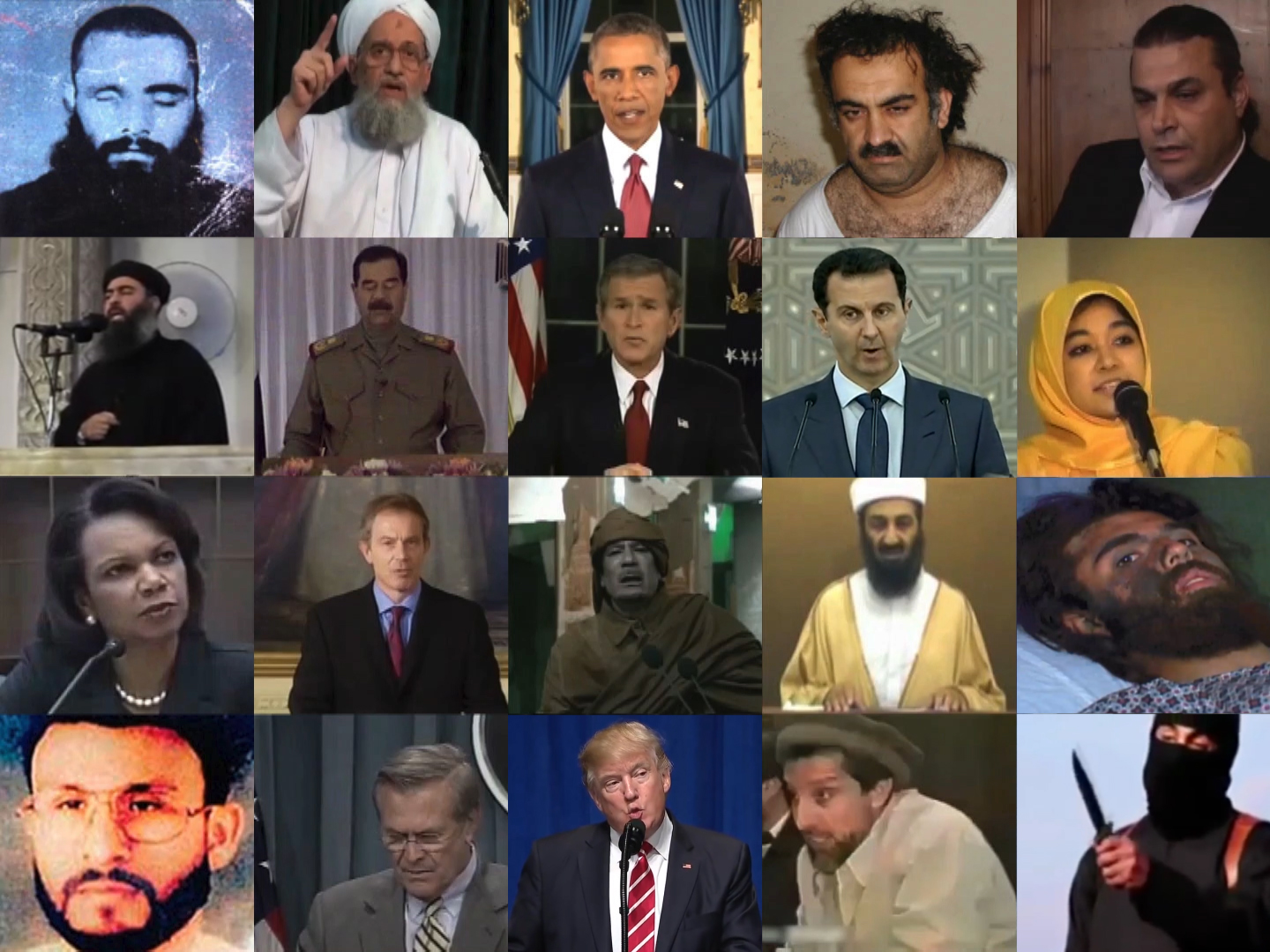
The spectacle of the ensuing and ongoing conflict has and is played out on screens across the world as a war of images and propaganda. Terror and violence make it easy for each side to dehumanize the other and reduce complexity to binary simplicity. Our increasingly visual culture, the twenty-four-hour news, and social media facilitate this superficiality and simplicity. The message has to be short and simple and often carries implicit signals and symbols.
That is a rather long and probably self-evident preamble to saying that I suppose my work is made with these representations in mind, or rather that these representations may be in the minds of people who may be interested in and look at my work. I try to re-represent or reconfigure these narratives. In one way, I think my work is similar to these representations because it explores the internal/external dichotomy implicit in terror: it comes from over there, but it may take place here. My work reflects this because it is about geo-political and global events but seen often through personal, domestic, or quotidian subjects.
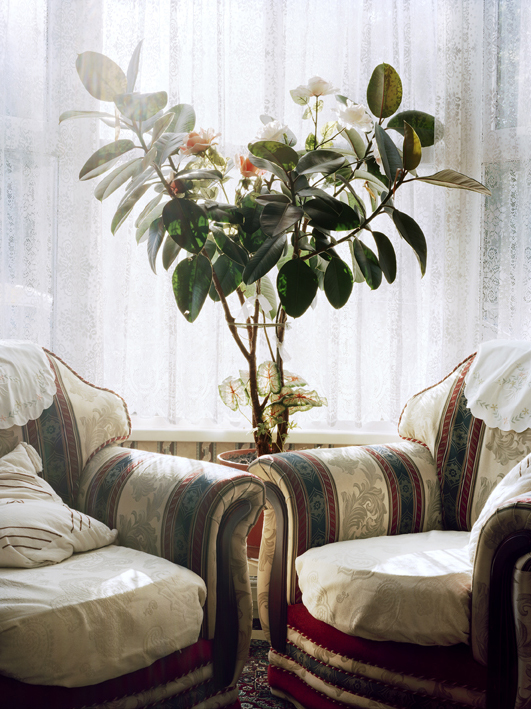
My work is different because it tries to bring these events and subjects down to a human level and because it tries to look behind what is seen on our screens. The spaces, processes, and experiences I evoke are not what is typically seen on our screens. For example, we are familiar with images of unidentifiable men in orange jumpsuits in Guantanamo connected to explicit messages of blame and retribution with implicit undertones of demonization and dehumanization. My work on Guantanamo begins with images of easy chairs or rose-patterned bedspreads in the homes of people in Britain who have been released from detention, without any charge against them. Domestic spaces we all identify with. But these are also images about Guantanamo Bay.
I think my work is different because it examines the processes behind the actions taken on our behalf by governments. My work with Crofton Black about the CIA’s rendition, detention, and interrogation program is not about torture or the experience of some of the high-value detainees seen on-screen, but about how the system was run, who was operating it, and where, in familiar and everyday locations, this process was taking place.
I think my work may be different because trying to represent such unseen processes and experiences involves complex narratives that may be inconsistent with on-screen messages.
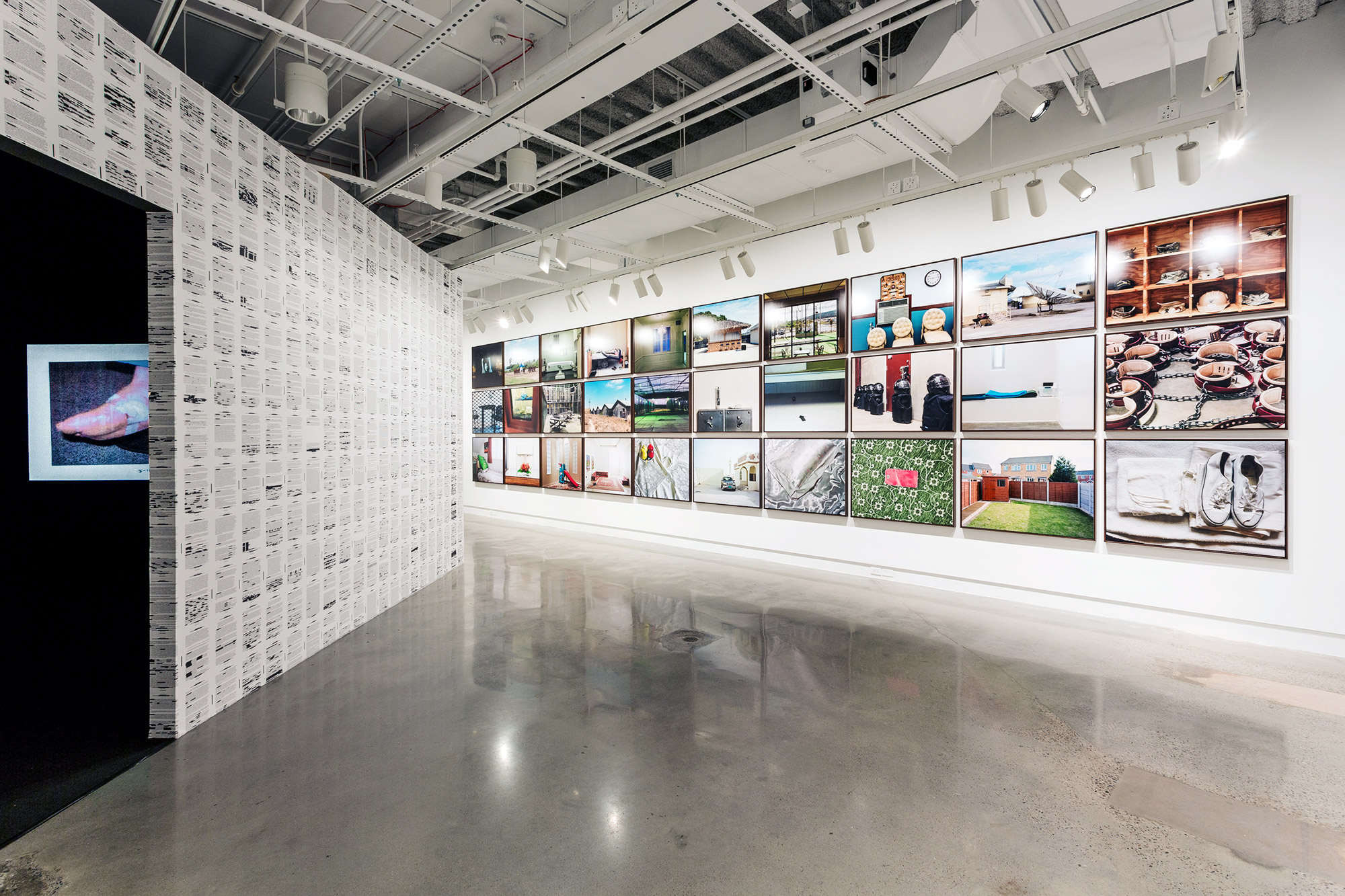
EB: If you want people to look at these issues differently, you might take the approach of photographing the subjects themselves. Yet very few of your series include people. Why did you decide not to depict people?
EC: In some instances, it’s because I cannot show them. At Guantanamo, you cannot identify detainees and can only identify military personnel with their immediate permission. Similarly, when I made work about a terror suspect in Britain living under the terms of a control order, a form of detention without trial, I could not identify the “controlled person,” as such individuals are referred to, or the location where he was made to live. I would be prosecuted if my work revealed either.
Some of the people I have worked with did not want to be identified or seen in the media. They want privacy, and they may want to move on from the experiences associated with their situations.
Ten years ago, the image of an Arab or South Asian man with a beard was very problematic. Images of Osama bin Laden were everywhere. Such representations of the human form, particularly of men related to Guantanamo Bay, were hard to use. Rather than engaging viewers with individuals, they risked serving as mirrors for viewers’ preconceptions of what a terrorist “other” looked like. I decided it was more effective trying to engage through shared experience by concentrating on spaces and objects that linked domesticity with detention. The absence of the human form is more interesting. There is no “other” to identify. It is a way of bringing the audience up short and trying to reconfigure how they see these subjects. It’s a way of surprising people and trying to engage them with the work. It may seem counterintuitive, but it is a way of trying to re-humanize a very dehumanizing discourse.
With Guantanamo: If the Light Goes Out, I made images in three types of personal or everyday space: ex-detainees’ homes, the detention camps at Guantanamo, and the naval base where the military live. Then I mixed those three spaces together in a disjointed narrative where viewers have to think about or work out what they are looking at. This may be knowledge-based or just through linking color and form in the photographs. It’s a way of evoking disorientation, the core technique of the interrogation process at Guantanamo.
Some of my work is about processes rather than people, Letters to Omar and Negative Publicity, for example. The subject of Negative Publicity is not the individuals who experienced extrajudicial detention and abuse but the operation behind their detention and transportation. The testimony of the individuals comes out through the documentation of this network and the investigations into it that are included in the work.
The responsibility of not picturing people is implicit in the images I make or use. Even if my work is not directly about the torture of individuals, there is a body in pain behind every document or photograph. This work is about that. The new installation in this exhibition, 198/2000, is directly about that experience and the process that documented it. It shows nothing but people and is at the center of the exhibition within the Body Politic.
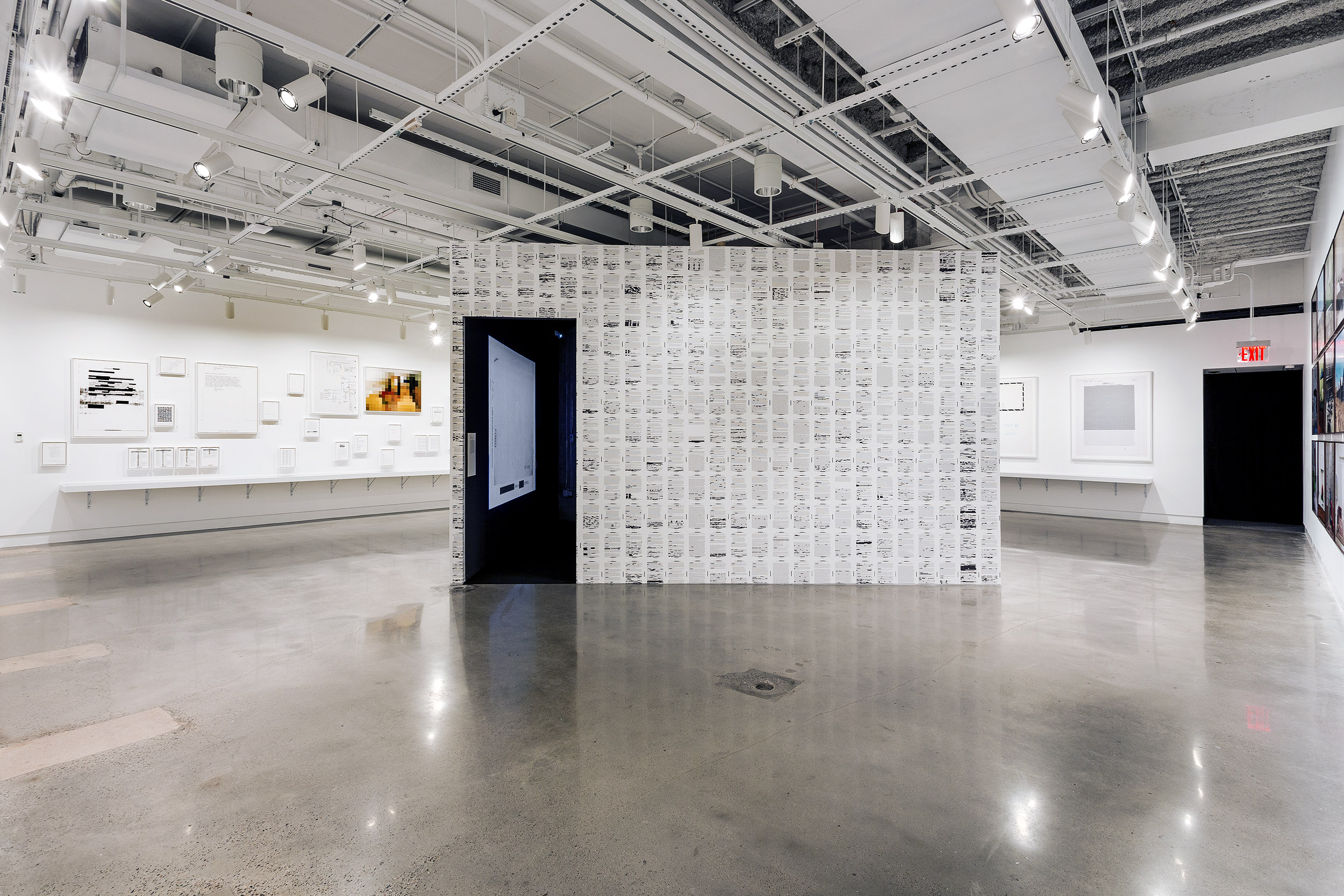
EB: Photographers have to deal with myriad restrictions when photographing the US military; the resulting images are tightly controlled. At Guantanamo, all your images had to be cleared by military censors. How do these restrictions shape your work?
EC: Those forms of censorship and control are implicit in my work. I make those forms of intervention clear so that people understand that making the work is confronting such restrictions and is shaped by them. At the same time, these restrictions contribute to how I choose to make work. I’ve worked at Guantanamo, and I’ve been embedded on a military base in Afghanistan for
The Mountains of Majeed. In these places, control is often as much about what you are not being shown as what images have to be deleted. It is possible to decide to find other things to photograph and other ways to visualize these situations. In some ways, these forms of control have stimulated me to look for new strategies of communication. I think trying to show a subject in a new way is inherent in trying to engage people when saying something different about that subject.
In the Guantanamo detention camps, you have to agree to work digitally so your images can be seen. The control involves not identifying detainees; not photographing security cameras, unmanned watchtowers, or more than one tower in a picture; and not having the sky and the sea in the same picture. At the end of every day, a security consultant goes through the images with you, a long and slow process, identifies any that are to be deleted, and gets you to sign a form before you delete the file.
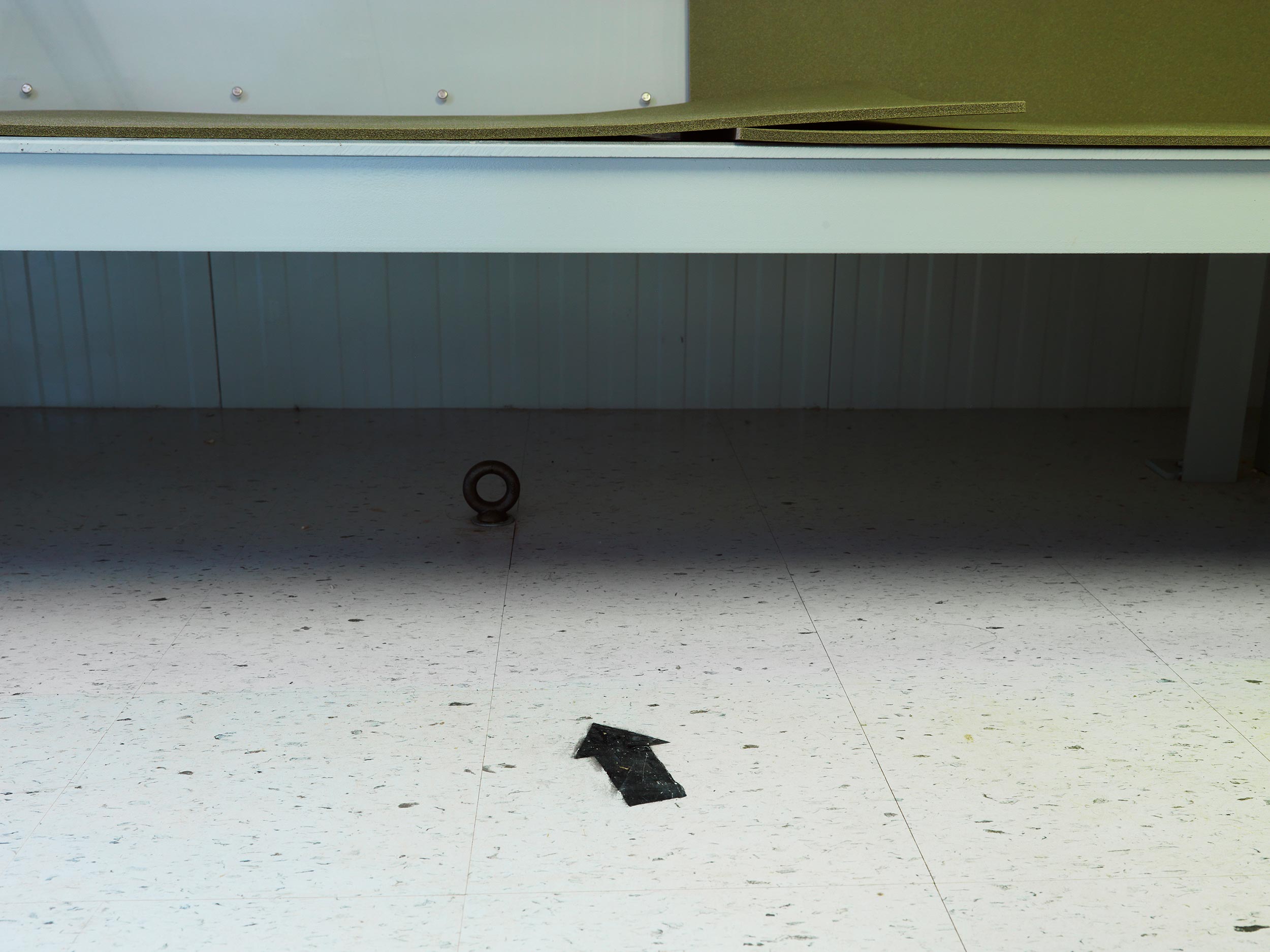
EB: Your work highlights instances of individuality or humanness: an email from an aviation company employee seemingly making light of extraordinary rendition flights, the arrow pointing to Mecca as well as to a ring for leg shackles in Guantanamo, or a pool at a luxury hotel that was used by pilots of rendition flights who forgot to disguise their identities when making telephone calls to loved ones. How do these seemingly small and perhaps banal instances shed light on the processes of control?
EC: Through using notions of proximity and complicity. To bring these processes closer, to show them in a way that it is hopefully possible to identify with; to identify with people’s decisions or experiences. By shortening the distance from the subjects on our screens.
Negative Publicity, for example, involves a lot of paper; banal documents of everyday commercial activity and exchange: invoices, emails, billing reconciliations, schedules, and such like. These are bits of paper we all have to engage with in our daily lives and our own business transactions. Those bits of paper are part of the paper trail assembled by Crofton Black’s investigation process, bringing out how extrajudicial transportation of individuals for enhanced interrogation in secret locations was run. Outsourced to big logistics companies who passed contracts down the line to small businesses. People who hire planes, who organize flight schedules, who run airfields. Those bits of paperwork start to reveal ordinary people’s part in that process. Whether that involvement is knowing or unknowing is another question. Some of this paperwork seems to suggest that people were aware of what they were doing, were aware of what the cargo was in the planes they were renting or flying or organizing flight schedules for. So that is about complicity. Not just of the governments we elect but of people like your neighbor. At what ethical, commercial, or political level did they make those choices? Do we?
The locations I visited to make images reflect this. A residential suburb, a quiet backstreet, a small village in a forest, the airports we pass through on our way to our holidays. These aren’t distant, exotic places in war-torn countries but everyday and familiar places.
This work reveals a network of mundane objects and sites that are charged with significance by their connection to the end result of the extraordinary rendition process. As such, they have been made part of a conflict.
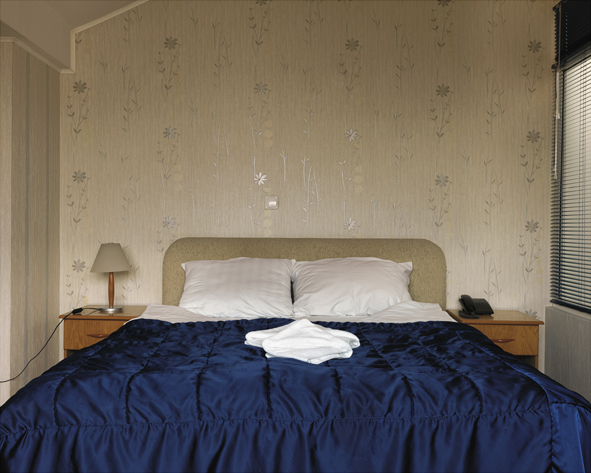
You mention the luxury hotel where flight crews stopped off. I spent three days in another less exclusive hotel room where a man was held and interrogated for twenty-three days. A plain, small hotel room. What could be more familiar? Perhaps not as place of incarceration, though. By using these instances, the work shows how we are all connected to and perhaps implicated in the way these processes were run and the places where they were happening.
EB: In a way it reminds me of Martha Rosler’s House Beautiful; Bringing the War Home, the series of photocollages made during the Vietnam War era. Do you see yourself working within specific photographic traditions?
EC: I don’t see myself working within any one photographic, artistic, or critical tradition. There are so many influences or ways of seeing to draw on.Photomontage or photocollage is certainly interesting, as it is often political and all about disruption or re-reconfiguration, from Martha Rosler’s work to Peter Kennard and Cat Phillips and back to Hannah Höch and John Heartfield.
Photographically, my background is in documentary and, originally, photojournalism. I started with a postgraduate photojournalism course a few years after doing a history degree, and I’ve certainly been influenced by how people have worked in these ways, including Susan Meiselas, who has given me great support, and David Goldblatt, to name just two. I have great respect for their work. Paul Graham’s work about the landscape and politics of Northern Ireland is a good example of seeing and showing a complex situation in a completely new way.
Eyal Weizman contributed a text to Negative Publicity, and the work of Forensic Architecture is a very interesting merging of forensics, theory, and aesthetics.
If we had this conversation tomorrow, I would come up with the names of different photographers, artists, or theorists. I have used ideas from Dutch sixteenth-century still-life painting to classical drama, Kafka, and Taliban poetry. Everything is a potential influence or source of ideas. Technology has made it so easy to draw on so many influences to try new things.
EB: Does this explain how you decide which media to use for each project?
EC: Partly, yes. I am always keen to try new forms. I am as interested in form as I am in my subjects. Issues of access and control obviously play a part in deciding how I make work and what media to use. There was censorship at Guantanamo, for example, and I had to work with a digital camera, which I had not done before. For Control Order House, I was given very limited access to stay and work with the “controlled person.” Such limitations force me to think of different ways of working.
Doing the same thing from project to project is not an option unless there is a good reason. I try to find a relevant way of making and showing work for every project. That involves thinking about the conceptual and formal point of using a technology or medium and changing each time if necessary. At best, it means the process of making or displaying is part of the subject itself rather than just a vehicle for it.
I make images and use found images. Photography is my base, but anything goes if it works. Every medium is an opportunity. I’ve made a sculpture out of razor wire and stones called The Victory Column of Enduring Freedom and used paintings, poetry, and sound. My most recent exhibition in Britain, In Place of Hate, consisting of work made as artist-in-residence in Europe’s only wholly therapeutic prison, includes pinhole camera photographs, film, performance, pressed flowers, and furniture from the prison. The photographs are projected onto prisoners’ bed sheets.
EB: How about the platforms or media you choose to show your work?
EC: The same goes for the platforms for showing work. In this respect bookmaking is probably my starting point. I try to create objects that through a combination of form, design, and content are implicitly about the subject rather than vehicles for photographs. Negative Publicity is an example of this. I’ve developed a relationship with designer Ben Weaver that is a creative collaboration.
Each platform, including books, magazines, online, museums, galleries, and public spaces, is an opportunity to reformulate work and reach potentially different audiences. Recently, I have had the chance to work with curators like yourself in developing museum and public gallery exhibitions. It has been very interesting bringing existing and new bodies of work together to create installations that fuse ideas and form and work as a whole rather than just being a showcase of different parts.
None of this is rocket science. Many other photographers and artists do this, in terms of making work and disseminating it.
The same is true for collaboration or participation in making work and producing it. Like many people, I work with others a lot now. These are creative relationships ranging from specialist technical input to research and ideas. They include the people I am making work about, lawyers, writers, academics, editors, other artists, and so on. This exhibition includes my direct collaboration with Crofton Black and very important input from the writer and critic Max Houghton and the multimedia editor Anna Stevens. I’ve already mentioned Ben Weaver, who I’ve designed four books and a catalogue with. My studio manager, Reinis Lismanis, is someone who I would also consider a collaborator in terms of his input into my recent work and exhibitions.
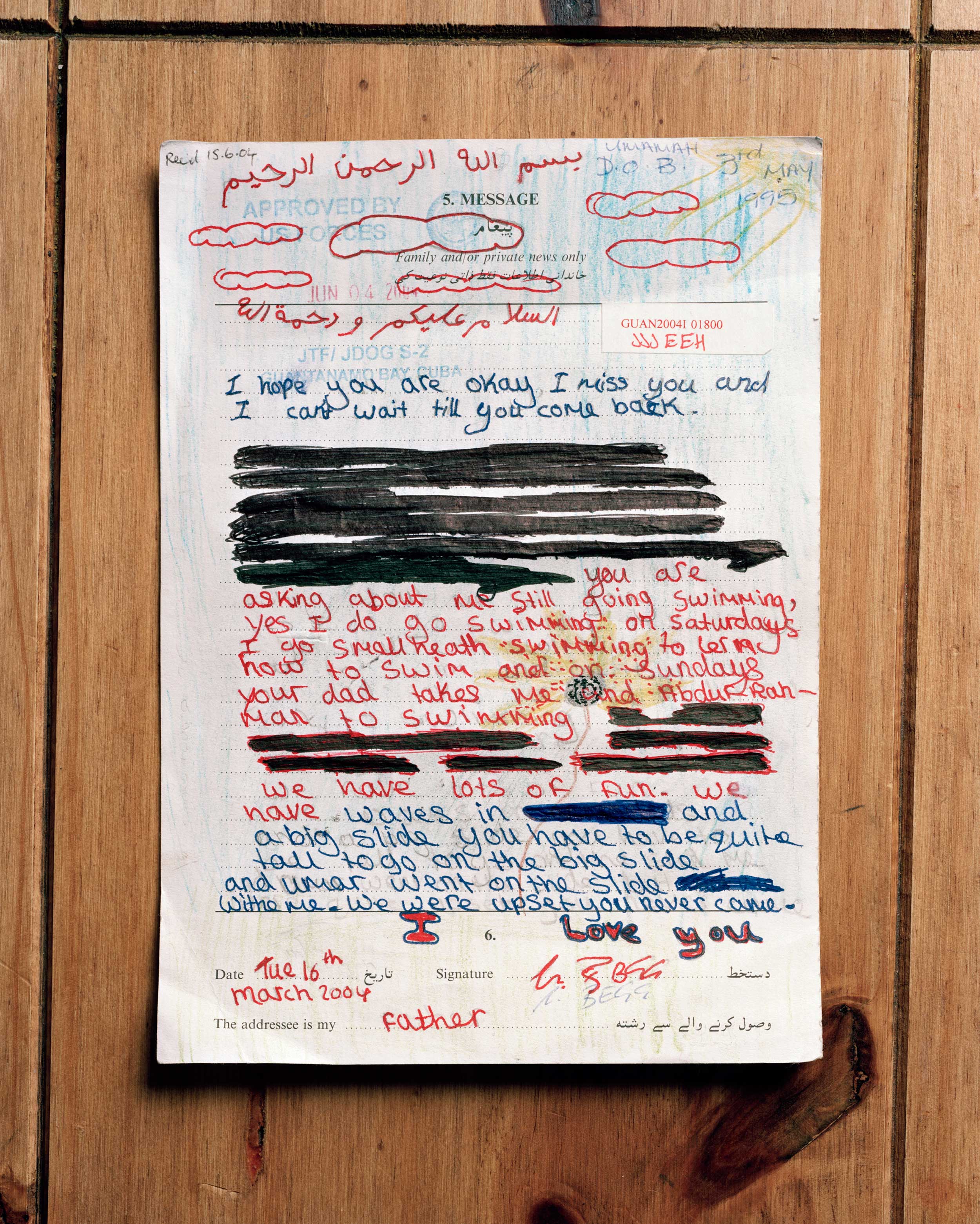
EB: Can you explain your interest in documents?
EC: Documents and bureaucracy are interesting as evidence, in terms of their content as words or diagrams, and as visual things that communicate through the forms they take in the processes of their production.
Pieces of paper are often the interface between individuals and the authority that is exercising control over them. There are two photographs of documents from Guantanamo in this exhibition that are chilling examples of this. One is a hand-redacted letter from a daughter to her father, and the other is an administrative review board letter to a detainee.
Letters to Omar is an example of how process relates to appearance and message. This series bears witness to something that my photographs cannot do. They reveal one of the bureaucratic processes of incarceration. The successive stages of transformation through scanning, stamping, and archiving reflect a process of degradation and control. Some of the images are upside down, and the resolution is poor. Most are black and white. These new documents were used in the control process exercised over the individual they were sent to. Omar believes the choice between color or monochrome was related to his perceived compliance. He also believed some of this material was planted by the interrogators controlling his life, and it added to his paranoia and disorientation.
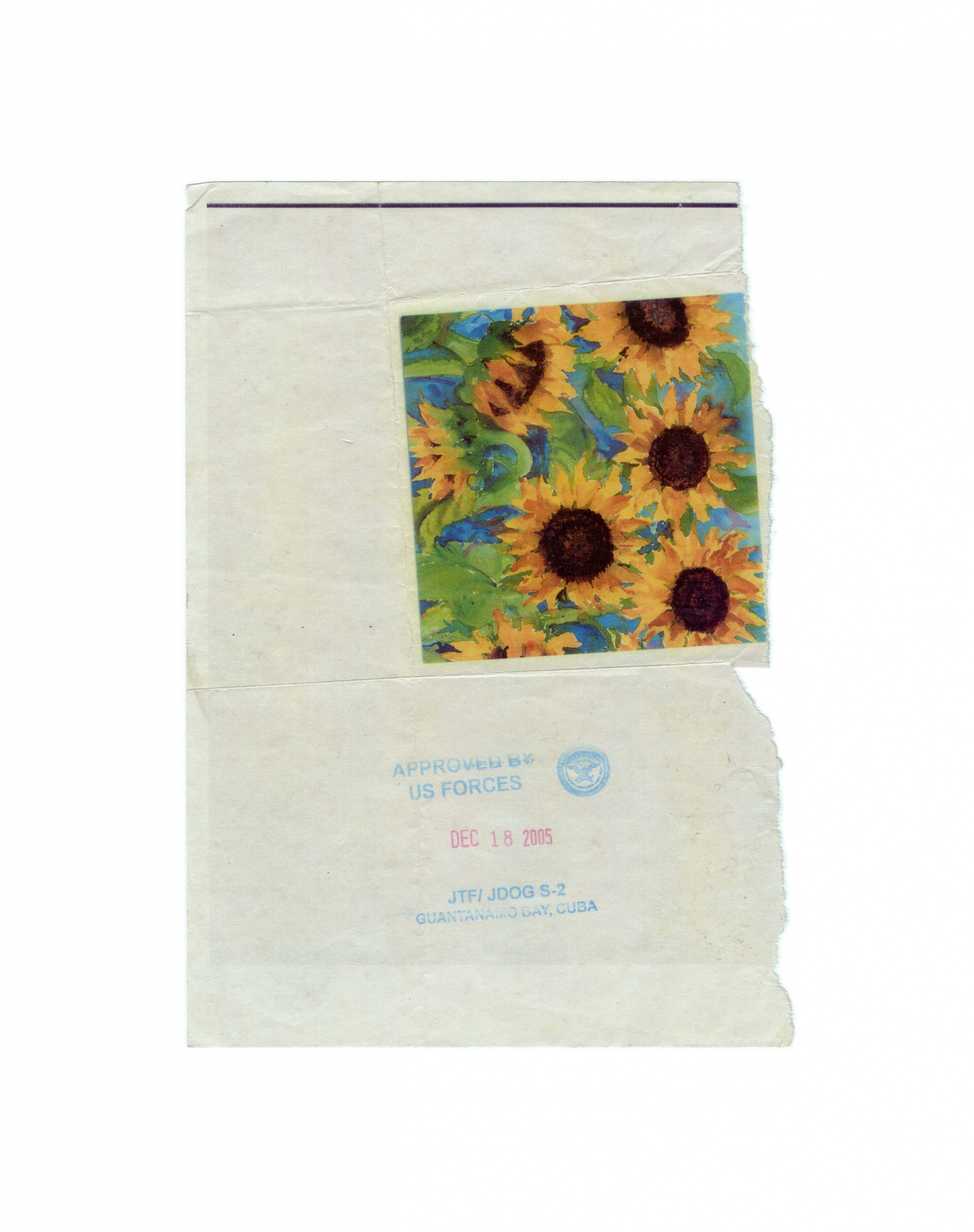
EB: The story of Letters to Omar is very personal because it’s made up of correspondence to just one detainee. If you consider the process of scanning, copying, and archiving correspondence that was required for every single detainee, it becomes overwhelming and hard to fathom. That project is successful because you show, again, the humanness but also a specificity that can be extrapolated.
EC: I think Omar received an exceptional amount of correspondence because of the campaigns run by his brother and lawyers. I asked all the ex-detainees I worked with if they had kept anything from Guantanamo. Omar showed me a handful of pages initially before showing me this white box full of folders of scanned material. I went through it all, looking for examples that I could use that didn’t identify the senders or their addresses. They link the senders and the decisions they made about an image or message to send as a gesture of support to the man in his cell. Some are from his family, but the vast majority are from people who had never heard of him before.
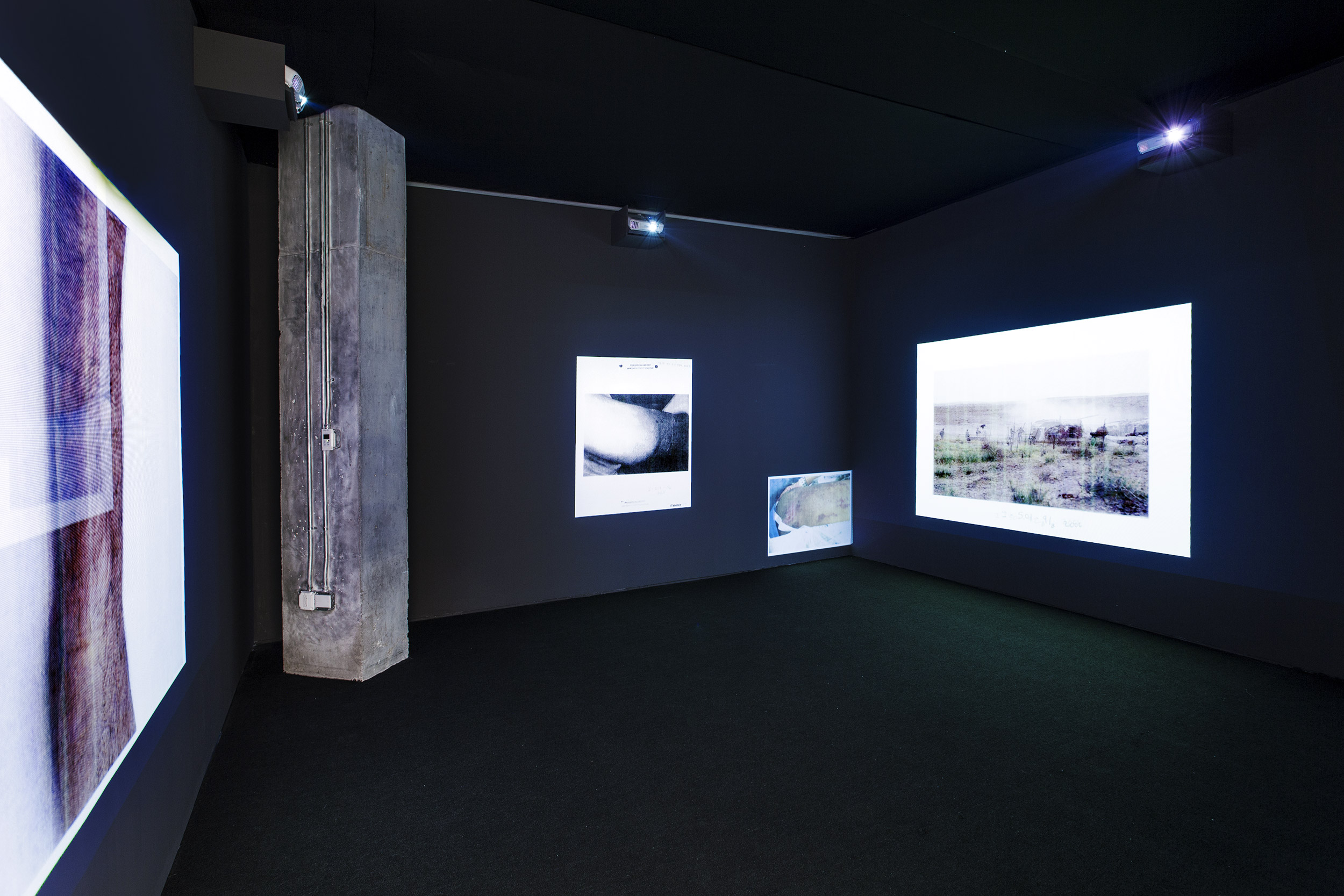
EB: Your intervention with the photographs, released as a result of freedom of information litigation by the American Civil Liberties Union, is interesting. Even in the title, 198/2000, you are suggesting that we have access to only 198 of these images, but what are the things that we are not seeing? These images are probably not the most terrible images; there are textual sources that point to more horrific abuse, but those are still being hidden from the public.
EC: They are proof, or an acknowledgment, of abuse by the US military. We are made complicit in that abuse by the knowledge these images impart. What do we do about it? They are also evidence of an investigation or recording of abuse that may have led to some sort of accountability, disciplinary procedure, or even reparation. But they are also redacted and have only been released after a long time because of ACLU litigation. As such, they are part of an act of denial and cover-up. This is what the title denotes, 198 images released out of an archive of 2000. That means these images have been selected. What kind of criteria would have been involved? The physical damage does not appear that bad, so perhaps that was one factor. The absence of the so-far unseen images implies they are likely to be more extreme than these redacted examples. That partial secret of implied violence is a form of terror; it engages and plays with the imagination.
EB: They’re also interesting when you compare them with the images made at the Abu Ghraib prison in Iraq by US military police. Those clearly were not intended as an archive of abuse. They were meant to document, of course, but only to be shared with the people who were participating in the abuse of the detainees. These images look much more systematic in their production.
EC: Systematic in as much as they show a forensic process. They are predominantly anatomical, showing hands, knees, legs, and heads. There are measuring rulers in some of the images. I associate these with medical or archaeological photographs. Overwhelmingly, though, I think the randomness and poor quality of the photography and reproduction evoke a distinct lack of care.
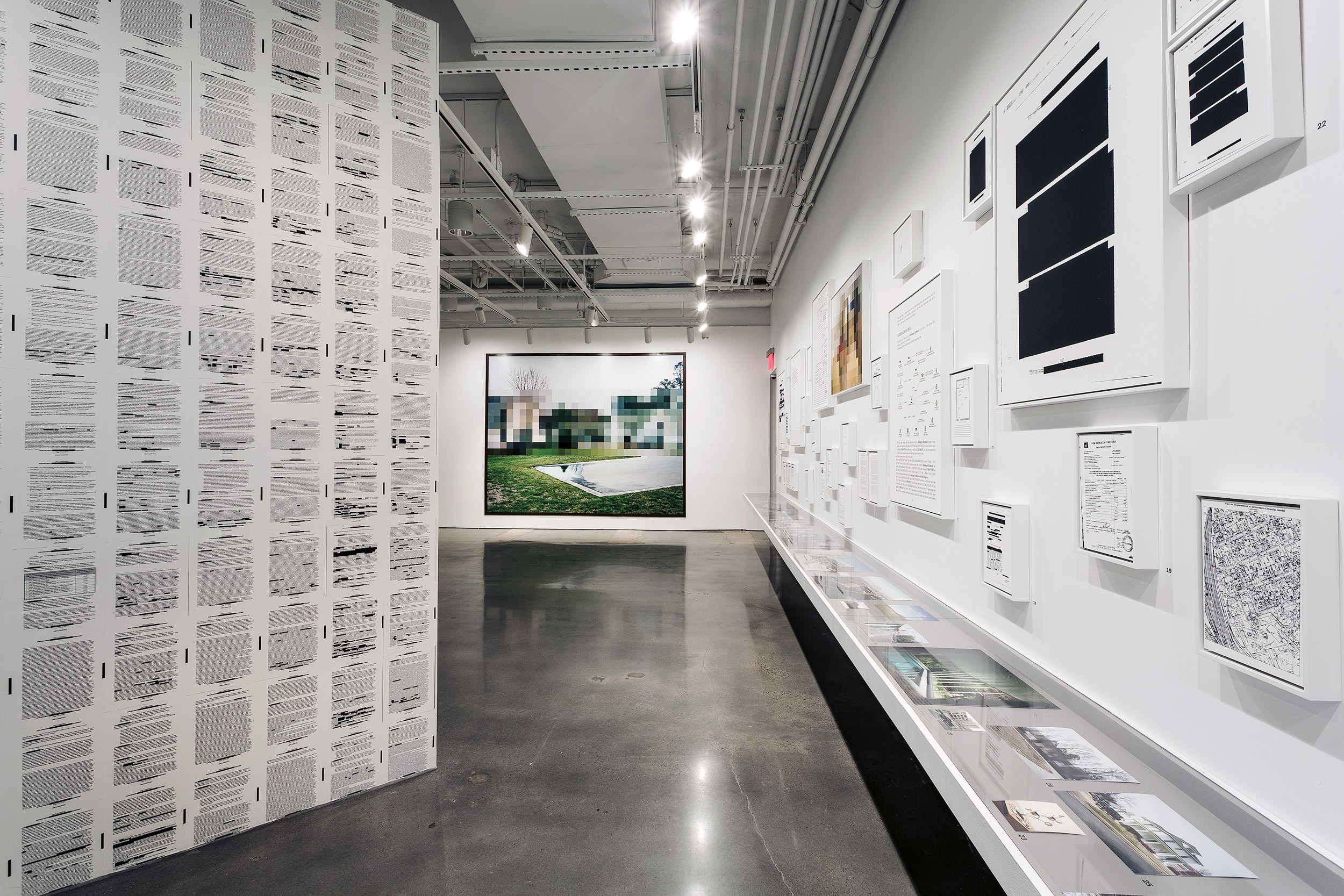
EB: What is the relationship between the documents and photographs in Negative Publicity?
EC: The photographs are a response to the documents. I did not want to make photographs, originally. I could not see a point. The camera did not seem relevant as a documentary tool. It could see nothing. I tried other routes of making images before deciding with Crofton and our designer, Ben Weaver, that there was a need for a formal visual counterpoint to the documents.
The visual presence of the black rectangle of redaction emerged from the documents. The photographs I eventually made are an equivalent of this. Many are façades, unremarkable streets, domestic details, and furnishings. Like the black rectangle, it is the opacity of these images that reveals something of the condition of extraordinary rendition. They are veneers of the everyday under which the purveyors of detention and interrogation operated in plain sight. The photographs are about the limits of what we can see. These limits define what is not revealed and what needs to be looked at. In his essay, Eyal Weizman talks about the idea of “negative evidence” and the paradoxical use of photography in Negative Publicity as a documentary process that shows only redaction and its relation to the violence of the secrecy.
Making the photographs developed into an act of testimony, of going to see even if there was nothing to see. It was also partly a visual reconstruction of the mundane network of rendition.
EB: You take photographs, you use found photographs, you use photographs that were created through bureaucratic processes. But you also use text, redacted or not. In a way, your bodies of work create an archive of the War on Terror, and you are choosing what bits and pieces to use. Could you talk about archives and the way that you use or create them?
EC: I have never consciously set out to create an archive of the War on Terror, but I understand what you mean by this. I’ve made work over ten years about Guantanamo, Afghanistan, the use of control orders in Britain, the CIA’s secret prison program, and military imagery of abuse. These are, in a sense, building up to a body of work about unseen aspects of the War on Terror and our governments’ responses to it and to the threat of terrorism.
What you choose to accumulate and put a border around and make a discrete whole, how you choose to categorize it, is an act of representation and interpretation, like writing history.
Like many artists, I take archives from one context and change their meaning by showing them in another. I have worked with ex-detainees, lawyers, and researchers to find material that can be recontextualized in this way. It is part of my own research process: Letters to Omar and 198/2000, for example.
The starting point to Negative Publicity was the documentation Crofton Black had accumulated in his research as a counterterrorism investigator. We collaborated on a curation of this, considering what is important in terms of evidence and also what is visually interesting. The way we use that material evokes the experience of his investigation as well as the network it reveals.
EB: Lastly, what does the title of the exhibition mean to you?
EC: It comes from the song “American Pie” by Don McLean. It’s a classic ballad, an American anthem. A favorite song from my childhood growing up absorbing American popular culture through television, films, comics, and music and everything those say about the values of America and the West.
It is a song identified as one of the tracks used for sleep deprivation or other interrogation purposes. That’s troubling for me because it changes the way I feel about one of my favorite songs. I find it hard not to think of the gentle lyrics about Americans mourning the death of Buddy Holly in relation to individuals experiencing extrajudicial detention, interrogation, and abuse. It makes me sad that such a lovely song could be chosen for this purpose and made complicit in abuse and torture. This is true of many of the lyrics of the music, advertising jingles, and soundtracks that were used for this. The Sesame Street song, for example, a staple of most childhoods. It changes my relationship to the culture I grew up with.
This change is due to measures we are told are necessary to defend what “we” stand for. Fundamental ethical and legal principles have also been changed by these measures. This is how terror works.


